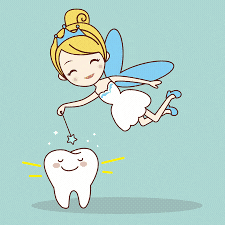A dental explorer is a tool that is used by dentists to help examine the teeth and surrounding tissues. The explorer has a thin, pointed end that can be inserted into areas of the gum that are difficult to see, such as behind the molars. This allows the dentist to get a better view of the teeth and determine if any abnormalities are present.
When it comes to dental work, precision is key. That's why dentists use dental explorers to help them navigate around teeth and gums with accuracy. These handy tools come in a variety of shapes and sizes, making them perfect for a variety of tasks.
The dental explorer is a long, thin instrument with a skinny handle that features some sort of rough area near the top to help grip. It also has very sharp points at both ends designed for use by dentists who need enhanced tactile sensitivity in order to find physical problems within their mouths.
Benefits of Dental Explorer
A dental explorer is a versatile tool that can be used to investigate the mouth for signs of oral disease. It's often included on basic trays with other essential items, such as gum probes and mirrors so you have all the necessary equipment at hand when it comes time to take care of your pearly whites!
The design of the explorer handle is ergonomic, making it easier on your hands and fingers.
The explorer instruments allow you to see what's going on in between your teeth, and they're especially useful for checking out the health of a tooth.
Provides greater visibility in difficult-to-see areas.
It's also lightweight, which reduces user fatigue when used for long periods of time.
A dental explorer is a long, thin instrument that dentists use to find the rough surfaces of teeth that cannot be seen with a toothbrush or basic dental mirror.
Dental explorer has been proven to reduce the time needed for an oral examination by 70%.
The dental explorer's long handle makes it easier for dentists, hygienists, and other professionals to see hard-to-reach areas of the mouth without having to bend or crouch down.
Dentists use dental explorers during routine exams as well as before and after procedures such as fillings, extractions, crowns, root canal treatment, implants, etc.
Dentists also use it in conjunction with other diagnostic tools such as x-rays or photographs taken from a specially designed camera mounted on their headgear.
Types of Dental Explorer
There are different types of dental explorers depending on their shape and size. Each type is designed for different purposes within dental work.
Shape:
Depending upon the shape of the explorer, there are two types:
Straight
Curved
End Points:
Based on their endpoints, they are of two types:
Single Ended
Double Ended, generally combined with a periodontal probe, in which one end is an explorer and the other is a periodontal probe.
Handle:
On the basis of explorers handle:
Metal Handed Explorer
Semi-Silicon Handled Explorer
Silicon Handled Explorer
Uses of Dental Explorer
This type of healthcare instrument can detect cavities in teeth.
The dental explorer is an examination instrument that typically comes with the mouth and periodontal probe on a basic tray setup.
A dentist might use a dental explorer in order to determine problem areas on the teeth before filling them with sealant, preparing for a crown, or modeling new denture teeth.
The dentist uses this tool to find areas of decay on the chewing surfaces or parts that face towards your tongue and cheek.
The explorer can also be used to measure the depth of a cavity.
How to use Dental Explorer?
A dental explorer is a tool used by dentists and dental hygienists to examine the teeth and gums. It typically has a sharp point on one end and a blunt end on the other and is used to probe around the teeth and gums to check for cavities, gum disease, or other problems.
The sharp point of the explorer can be used to scrape off plaque or tartar from the teeth, while the blunt end can be used to apply pressure to different areas of the mouth.
The dental explorer should be inserted into the space between the gum and the tooth, using a light back-and-forth motion. If there is any tenderness, it may indicate that there is an infection or cavity present.
Tips for using a Dental Explorer
It is important not to let go of the end of the explorer while it is inside the mouth, as doing so may cause damage to your gums and tissues.
When using a dental explorer, it's important to be gentle as you probe around the teeth and gums.
You should use light pressure and take your time to explore all the nooks and crannies around the teeth.
If you're having trouble locating a particular tooth, try probing in different directions until you find the right spot.
Review
The Dental Explorer is a unique and innovative product that provides dental professionals with an easy way to introduce the concept of dental hygiene. These innovative tools were designed to make your teeth cleaning experience more comfortable and easy.
Click on the Buy now button and get a discount.
